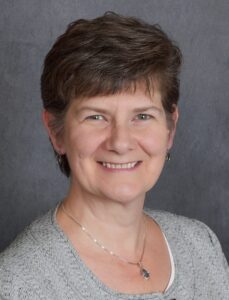President/Principal Engineer
Professional
Hazardous Materials Shipper – DOT, IATA
Certified Opacity Reader (EPA Method 9)
Certified Erosion & Sediment Control Lead
HAZOP Trainer
OSHA 40-Hour HAZWOPER Trained
Professional Engineering Licensures – ID, MT, OR, WA
MS Environmental Engineering, Rensselaer Polytechnic Institute, NY
BS Chemical Engineering, Clarkson University, NY
BS Chemistry, Clarkson University, NY
Recognition
NSPE Fellow (2021)
SBA Emerging Leaders (2018)
PNWIS-AWMA – Executive Committee Award (1999, 2014)
Rotary International Paul Harris Fellow (2001, 2012)
PNWIS-AWMA – Excellence in Presentation (2011)
WSPE Young Engineer of the Year (2002)
SWE Spokane Chapter – Engineer of the Year (1999)
Order of the Engineer (1998)
Memberships
Air & Waste Management Association
- Inland Northwest Chapter – Past Chair, Past Secretary, Past Treasurer
- Oregon Chapter – Past Vice-Chair
- PNWIS Annual Conference Chair – 1999 (Richland WA) & 2014 (Spokane WA)
National Society of Professional Engineers
- Western & Pacific Region – Chair (2019-2021)
- WSPE – Past President (2008-2009)
- Spokane Chapter – Past President, Past Treasurer/Secretary
American Industrial Hygiene Association
American Society of Safety Professional (pka American Society of Safety Engineers)
Society of Inland Northwest Environmental Scientists
Spokane Area Chamber of Commerce
Spokane Valley Chamber of Commerce
Work History
1997 – date Principal, Spring Environmental, Inc., Spokane, WA
1994 – 1996 Consulting Engineer, OMNI Environmental Services, Inc., Beaverton, OR
1991 – 1994 Environmental Engineer, GE Plastics, Selkirk, NY
1990 – 1991 Process Engineer, GE Lighting, Cleveland, OH
Work Experience (Selected Examples)
Auditing
Conducted annual formal compliance audits for a chemical manufacturing facility for air, water, waste, and emergency planning. Negotiated an action plan with operations personnel and provided follow up communications on the status of the action plans. The audit was conducted using off-the-shelf software modified in-house to incorporate state and facility requirements.
Developed and conducted environmental performance assessments for two printing operations and several utility transmissions locations. The assessments compared the actual operations with the internal protocols and procedures. Variations were discussed with operations staff and an action plan developed. Follow-up reports were provided to management and operations personnel.
Engineering
Investigated sources of fugitive dust emissions at a grain handling facility and recommended measures for minimization. Once the client and regulatory agency accepted the preferred options, project management was provided to implement recommendations. Conducted final inspections to verify equipment specifications for installation and operability.
Evaluated incinerator efficiency using physical and chemical parameters such as CO or NOx emission rates, temperature, and/or process rates. Investigated measures to increase efficiency (energy use, combustion) and managed implementation of modifications.
Monitoring
Supervised and conducted air quality source testing for various contaminants including particulate matter (TSP and PM10), carbon monoxide, carbon dioxide, oxygen, nitrogen oxides, volatile organic compounds, mercury, chlorine, ammonia, formaldehyde. Managed source testing for approximately 30 facilities in several industries including mineral fibers, pulp and paper, wood products, asphalt production, printing, plastics manufacturing and veterinary crematorium.
Revised and implemented groundwater monitoring program for RCRA landfill. Defined protocols and specifications for monitoring; supervised monitoring and reporting by others; and negotiated deviations with state agency. In the case of malfunction in the landfill system, coordinated with others to redesign the landfill and install engineering controls to eliminate groundwater contamination off-site.
Permitting
Updated and maintained over 400 source permits for a large chemical manufacturing facility. The engineering assumptions for each source were reviewed every three years and the emissions recalculated as appropriate. In addition, administrative information was revised – hours of operation, source description and control equipment description. During the three-year cycle each permit was revised either administratively or technically. Changes were negotiated with the state agency. When the permits were revised, the monitoring systems were modified to incorporate any additional required parameters.
Supported the development of a RCRA Part B permit. A team of industry engineers and consultants reviewed each aspect of a Treatment, Storage and Disposal Facility (TSDF) and prepared a comprehensive Part B permit application. The facility included a 5-cell landfill, leachate collection and treatment, solvent recycling, boiler/industrial furnaces, non-hazardous incinerators, biological wastewater treatment and drum storage and recycling.
Developed and negotiated air permit applications for Title V, synthetic minor and minor sources including lithographic printing operations, bakery glaze operations, veterinary clinics and wood products. Emissions inventory, regulatory review, modeling, employee commute options, and flexibility analysis were significant aspects of each of these projects.
Safety Engineering
Developed accident prevention plans for various industries including chemical manufacturing, furniture manufacturing and printing. Conducted hazard analysis including physical, chemical, and biological. Reviewed applicability and supervised implementation of Process Safety Management program.
Training
Provided emergency coordinator and waste management training to waste management personnel at a TSDF and several printing operations. Annual training is required under RCRA, so this program was updated and included interactive instructions. Also provided site-wide emergency response training at various locations to over 1,000 people annually.
Developed and provided hazard communication (DOT and OSHA) training to various facilities in the printing and utility transmission industries. This annual training included regulatory updates and introduction to technical resources in an interactive multimedia format.
Waste Management
Developed pollution prevention programs for a large chemical manufacturing facility and several printing operations. The pollution prevention solutions included cost-effective recycling and raw material substitution for ink, solvents, paper, and cardboard. Developed plans and reported results through appropriate environmental programs including SARA, RCRA and EPCRA.
Defined and initiated comprehensive waste management program for various facilities including chemical manufacturing, printing operations and bakery glaze operations. The waste management programs included developing accident prevention and emergency response plans, training employees, initiating contracts with waste management companies, defining and engineering staging areas, acquiring labeling supplies and documenting manual for waste management program.
Defined and initiated comprehensive waste management program for various facilities including chemical manufacturing, printing operations and bakery glaze operations. The waste management programs included developing accident prevention and emergency response plans, training employees, initiating contracts with waste management companies, defining and engineering staging areas, acquiring labeling supplies and documenting manual for waste management program.
